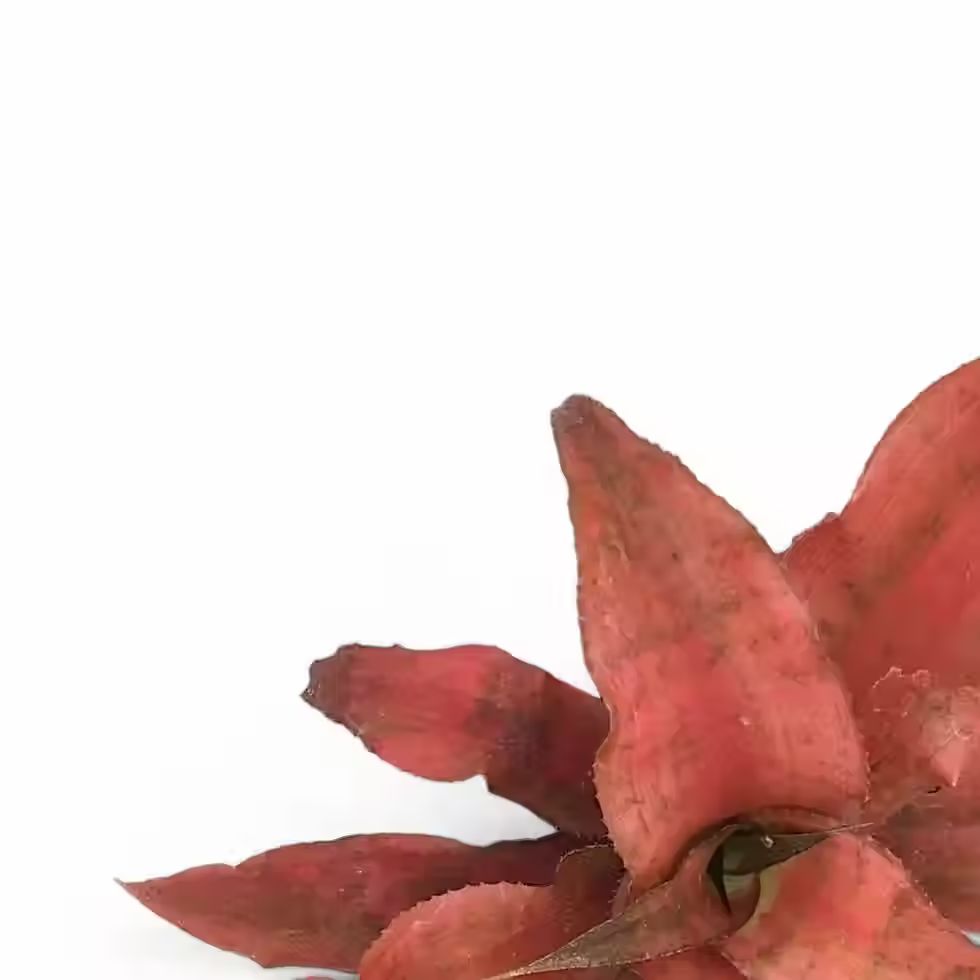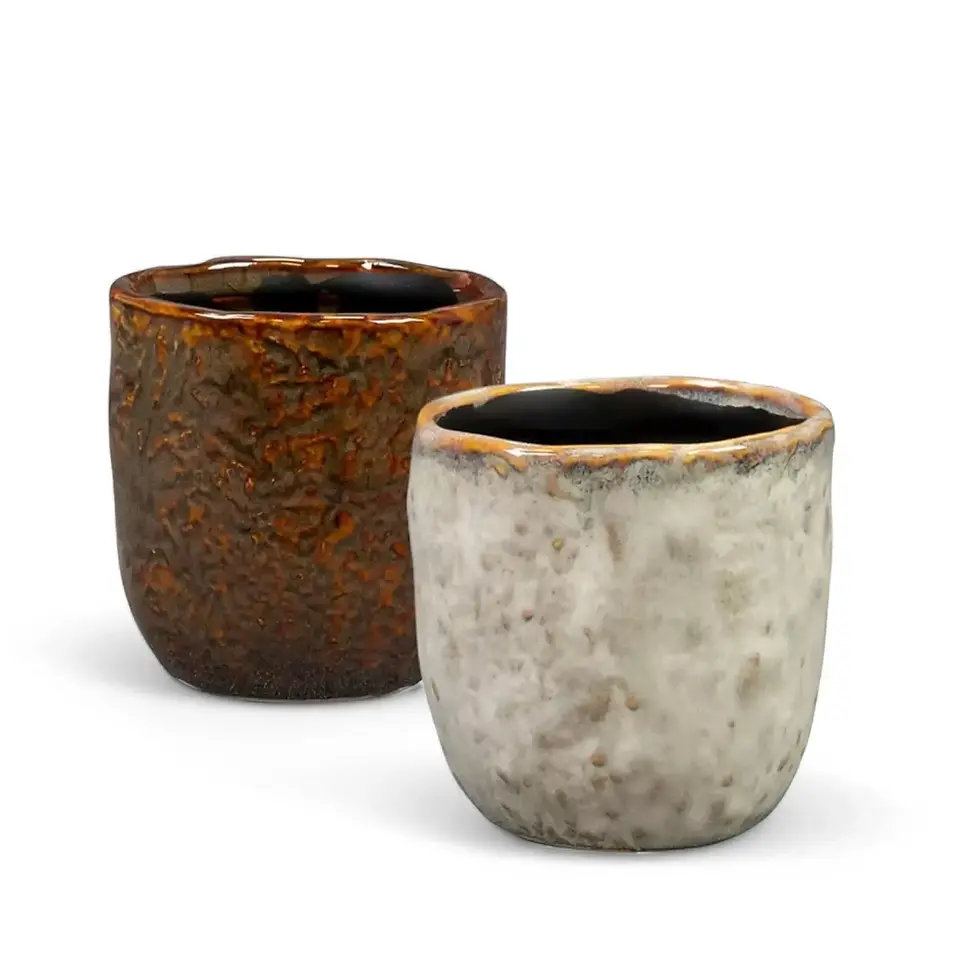Goeppertia (Calathea) veitchiana 'Medaillon' - Detailed Care and Growing Guide
Goeppertia veitchiana 'Medaillon', commonly referred to as Calathea 'Medallion', is a striking houseplant known for its large, round leaves adorned with intricate green patterns. The deep green upper side features light green brushstroke-like markings, while the undersides display a rich burgundy tone, adding contrast and elegance. This tropical beauty thrives in warm, humid environments and moves with the light—folding up at night and opening in the morning, a phenomenon known as nyctinasty. Its bold appearance and dynamic nature make it a standout addition to any indoor plant collection.
Key Features and Benefits of Goeppertia (Calathea) veitchiana 'Medaillon'
- Striking Foliage: Medallion-shaped leaves with an intricate mix of greens and a deep purple underside.
- Ideal Indoor Size: Grows 60-90 cm tall and wide, making it suitable for homes and offices.
- Pet-Friendly: Non-toxic to cats, dogs, and humans.
- Moderate Growth Rate: Produces new foliage consistently with proper care.
Natural Habitat and Growth Behavior of Goeppertia (Calathea) veitchiana
- Origin: Native to the humid tropical rainforests of Ecuador.
- Climate: Prefers temperatures between 20-30°C with humidity above 70%.
- Growth Habit: Forms a compact, upright, and bushy shape with broad foliage.
- Toxicity: Safe for pets and humans, making it an excellent choice for households with animals.
How to Care for Goeppertia veitchiana 'Medaillon'
→ Placement and Light
- Thrives in bright, indirect light but can adapt to lower light conditions.
- Avoid direct sunlight, which can scorch its leaves and cause fading.
- Ideal placement: A humid room or near a humidifier.
→ Watering
- Keep soil consistently moist but not soggy.
- Water when the top 2-3 cm of soil dries out.
- Use filtered, distilled, or rainwater to prevent mineral buildup that can cause leaf browning.
→ Humidity and Temperature
- Prefers humidity levels of 50-70% - dry air can cause crispy leaf edges.
- Optimal temperature range: 18-27°C.
- Avoid placing near drafts, radiators, or air conditioners.
→ Soil and Potting Mix
- Requires a well-draining, nutrient-rich potting mix.
- Best mix: peat-free potting soil with perlite and orchid bark.
- Maintain a soil pH of 5.5-6.5 for optimal growth.
→ Repotting and Pot Choice
- Repot every 2 years or when roots start to outgrow the pot.
- Use a pot with drainage holes to prevent root rot.
- Choose a pot 1-2 cm wider to encourage steady growth.
→ Fertilization
- Feed monthly during spring and summer with a balanced liquid fertilizer diluted to half strength.
- Reduce fertilization in winter as growth slows.
→ Propagation
- Best propagated through division during repotting.
- Separate healthy sections with roots attached and plant them in fresh soil.
→ Hydroponics and Semi-Hydroponics
- Can adapt to semi-hydroponic setups using LECA or other inert substrates.
- Ensure roots have access to oxygen and are not fully submerged.
→ Pruning
- Trim yellow or damaged leaves at the base to encourage fresh growth.
Goeppertia (Calathea) veitchiana 'Medaillon' - Common Issues and Solutions
→ Pests
- Spider mites: Look for fine webbing on leaves. Wipe leaves with a damp cloth or microfiber dusting gloves for plants and increase humidity.
- Fungus gnats: Let the top layer of soil dry out and use yellow sticky traps.
- Mealybugs and thrips: Inspect leaf undersides and treat with neem oil, or use beneficial insects or insecticidal soap.
→ Root Rot
- Caused by overwatering or poor drainage.
- If suspected, remove the plant from its pot, trim affected roots, and repot in fresh soil.
→ Leaf Problems
- Curling leaves: Sign of underwatering or low humidity. Increase watering and humidity.
- Brown leaf edges: Likely due to low humidity or fluoride in tap water.
- Yellowing leaves: Often due to overwatering—adjust watering schedule.
- Drooping leaves: Could indicate temperature stress, dry soil, or overwatering.
→ Fungal Issues
- Leaf spot diseases appear as brown patches with yellow halos.
- Prevent by avoiding overhead watering and ensuring good air circulation.
Interesting Facts
- Its leaves move up at night and open in the morning due to nyctinasty.
- Originally classified as Calathea veitchiana, it was reclassified under Goeppertia in 2012.
Etymology
- Genus: Named after Heinrich Göppert, a 19th-century German botanist.
- Species: Named after the Veitch family, influential horticulturists.
- First Described By: Veitch ex Hook.f. and reclassified by Borchs. and S. Suárez in 2012.
Frequently Asked Questions about Goeppertia (Calathea) veitchiana 'Medaillon'
→ 1. Why are the leaves of my Goeppertia (Calathea) veitchiana 'Medaillon' curling?
- Likely due to low humidity or underwatering. Increase watering frequency and mist surroundings (but not directly on leaves).
→ 2. Is Calathea Medallion safe for pets?
- Yes, it is non-toxic to cats, dogs, and humans.
→ 3. How often should I repot Goeppertia (Calathea) veitchiana 'Medaillon'?
- Repot every 2 years or when it outgrows its pot.
Order Your Goeppertia veitchiana 'Medaillon' Today!
Add this stunning, low-maintenance tropical plant to your indoor collection today. Order now and enjoy its vibrant foliage in your home!
Goeppertia (Calathea) veitchiana 'Medaillon'
Goeppertia (Calathea) veitchiana 'Medaillon' comes in following sizes:
M – is approximately 40 cm tall and comes in a ⌀ 14 cm pot
L – is approximately 55 cm tall and comes in a ⌀ 19 cm pot
XL– is approximately 70 cm tall and comes in a ⌀ 24 cm pot

























































